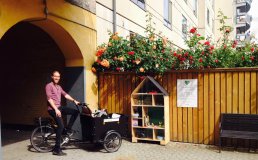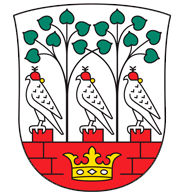Housing associations are using innovative waste solutions to improve community connection in neighborhoods and lower consumption.
Frederiksberg Municipality is testing a new scheme to challenge single-use culture through an innovative partnership with a circular economy organization called Naboskab. Ten swap cabins have been set up in housing associations across the municipality for citizens to add and take books, services, clothes, machines and more, instead of throwing things out.
52K
KG OF CO2 IS POTENTIALLY REDUCED ON AN ANNUAL BASIS AS A RESULT OF THE TEN SWAP CABINETS
The project’s value lies not only in the solution to reduce consumption and waste, but in the fact that municipalities can use the project to strengthen communities and promote cooperation. In addition to reducing consumption and CO2 emissions, the vision for the project is that it will increase social value for residents in the housing associations.

The swap cabins give the individual fewer things to store, access to more objects and improve community spirit between neighbors.
In tandem with setting up the new swap cabins, the municipality has initiated an Environmental Ambassador scheme, where volunteers from the associations disseminate knowledge locally about recycling and environmental efforts. Environmental Ambassadors are crucial to the project’s longevity and create lasting change, as local and social anchoring provide the best conditions for sustained behavioral changes to consumption and recycling.
How the Global Goals are addressed
Sustainable Cities and Communities
As well as the environmental impact of the scheme, social cohesion is also increased in the housing associations; this is a major motivational factor for the Environmental Ambassadors.
Responsible Production and Consumption
The swap cabins contribute to reducing waste and can replace buying new items. According to Naboskab's calculations, each cabin reduces CO2 emissions by 5,208 kg per year.
Partnerships for the Goals
The project is an example of how interactions between the private, public and civilian sectors can develop and embed innovative and efficient solutions for the waste area.



